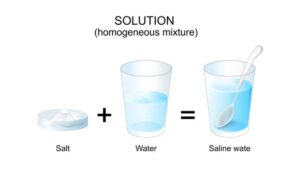It is expected that the National Testing Agency might conduct the National Eligibility cum Entrance Test 2026 at various exam centers in May 2026. All the students who are studying in class 12th or have had a year off for exam preparation must ensure that they are reading and learning all the important topics mentioned in the NEET Syllabus 2026. Microbes in Human Welfare is one such important chapter that is a part of the NEET Biology Syllabus 2026. To assist aspirants with their preparations for this chapter, we have shared the Microbes in Human Welfare NEET Notes in the article below.
Microbes in Human Welfare NEET Notes
Microbes are essential for human welfare, playing vital roles in household activities, industrial processes, and environmental management. They are used in producing foods like yogurt and cheese, making industrial products such as antibiotics, organic acids, and enzymes, and cleaning the environment through sewage treatment and biogas production. Additionally, microbes are used in agriculture as biofertilizers to enrich soil and as biocontrol agents to protect crops from pests.
The Microbes in Human Welfare NEET Notes are essential for all the students; therefore, we have shared the overview of NEET Notes in the article below:
1. Microbes in Household Products
Microbes are extensively used in the preparation of traditional foods and beverages:
- Curd and Cheese: Lactobacillus bacteria convert milk into curd by fermenting lactose to lactic acid. This improves digestibility and nutritional value. In cheese-making, various microorganisms are used to enhance flavor and texture.
- Beverages: Saccharomyces cerevisiae (yeast) is used in the fermentation of grains and fruits to produce alcoholic beverages like wine, beer, and whisky.
- Bread Making: Yeast releases carbon dioxide during fermentation, which makes the dough rise and gives bread its fluffy texture.
2. Microbes in Industrial Production
Industrially important products such as alcohols, acids, and enzymes are produced using microbes.
- Fermented Beverages: Yeast converts sugar into alcohol under anaerobic conditions – a process used in the production of beer and wine.
- Antibiotics: Microbes produce substances that kill or inhibit the growth of other microorganisms.
- Penicillium notatum produces Penicillin, the first discovered antibiotic.
- Streptomyces species produce Streptomycin, Tetracycline, and Erythromycin.
- Chemicals and Enzymes:
- Aspergillus niger → Citric acid
- Acetobacter aceti → Acetic acid
- Lactobacillus → Lactic acid
- Lipase, amylase, and pectinase are microbial enzymes used in food, textiles, and detergents.
3. Microbes in Sewage Treatment
Microbes play a key role in decomposing organic matter in sewage before it is released into natural water bodies.
- Primary Treatment: Removes solid particles through filtration and sedimentation.
- Secondary Treatment (Biological Treatment):
- Aerobic bacteria in the aeration tank digest organic waste, forming activated sludge.
- This sludge is rich in useful microbes and can be reused as an inoculum.
The treated water is safe for release into rivers or can be reused in irrigation.
4. Microbes in Biogas Production
In rural areas, microbes help convert waste into biogas – a renewable source of energy.
- The main microorganisms involved are methanogenic bacteria like Methanobacterium.
- They act on cow dung and other organic matter in anaerobic conditions to produce methane (CH₄), carbon dioxide (CO₂), and hydrogen (H₂).
- This biogas is used as fuel for cooking and lighting in villages.
5. Microbes in Bioremediation
Microbes help clean the environment by breaking down pollutants – a process called bioremediation.
Examples:
- Pseudomonas putida is used to clean up oil spills.
- Trichoderma species decompose harmful pesticides and organic waste.
6. Microbes as Biofertilizers
Microbes improve soil fertility by fixing nitrogen, decomposing organic matter, and enhancing nutrient availability to plants.
- Bacteria: Rhizobium (in legume root nodules) and Azotobacter (free-living in soil) fix atmospheric nitrogen.
- Cyanobacteria (Blue-Green Algae): Anabaena, Nostoc, and Oscillatoria enrich paddy fields.
- Mycorrhiza (Fungi + Roots): Glomus helps plants absorb phosphorus and water efficiently.
7. Microbes in Biotechnology and Genetic Engineering
Microbes are key tools in biotechnology for producing genetically modified organisms (GMOs) and recombinant products.
For example:
- Escherichia coli is used in recombinant DNA technology.
- Agrobacterium tumefaciens acts as a natural genetic engineer in plants.
Importance of Microbes in Human Welfare NEET Notes
Preparing for the NEET Exam requires students to study using the best study materials, and NEET Notes are one such study material that guides and helps students complete their exam preparation. Below, we have listed some features detailing the importance of Microbes in Human Welfare NEET Notes:
- Essential in Food and Beverage Production: Microbes like Lactobacillus and Yeast are used in making curd, cheese, bread, and alcohol through fermentation, improving both taste and nutrition.
- Crucial for Medicine and Antibiotic Production: Many life-saving antibiotics, such as Penicillin and Streptomycin, are produced using microbes, helping to treat bacterial infections effectively.
- Used in Industrial Processes: Microbes produce valuable products like citric acid, acetic acid, and enzymes that are widely used in food, textile, and pharmaceutical industries.
- Aid in Sewage Treatment: Microbes help decompose organic waste in sewage treatment plants, purifying water and making it safe for reuse or release into rivers.
- Contribute to Renewable Energy Production: Methanogenic bacteria convert organic waste into biogas, a clean and eco-friendly source of energy for rural households.
- Improve Soil Fertility: Microbial biofertilizers like Rhizobium, Azotobacter, and Anabaena fix nitrogen and enrich soil nutrients, promoting sustainable agriculture.
- Help in Environmental Clean-up: Certain microbes degrade pollutants and toxic chemicals, making them vital for bioremediation and environmental protection.
- Used in Biotechnology and Genetic Engineering: Microbes like E. coli and Agrobacterium are used in genetic research and recombinant DNA technology for developing new medicines and crops.
Important Questions on Microbes in Human Welfare
- What are biofertilizers?
- What is biogas and which gas is the major component of it?
- What are the two main steps in sewage treatment?
- How do microbes help in detoxifying pollutants?
- Name two enzymes obtained from microbes and their industrial uses.
- How do mycorrhizal fungi benefit plants?
- Name two fermented beverages and the microbes used to prepare them.
- Why is biogas called a renewable source of energy?
- What are methanogens? Give one example.
- What is bioremediation?
- What are secondary metabolites? Give examples.
- Give one example of a genetically modified product made using microbes.
- What is the role of E. coli in biotechnology?
- What is the scientific name of baker’s yeast?
- Which organism produces lactic acid industrially?
- Which cyanobacteria are used as biofertilizers in paddy fields?
- Which microbe is used for the production of citric acid?
- Which microorganism is responsible for curd formation?
- Which type of bacteria is used in the secondary treatment of sewage?
- How are microbes used in the production of recombinant proteins?
- Which bacterium is called the “natural genetic engineer” of plants?
- Write the chemical composition of biogas.
- Which microorganism is used for the production of acetic acid?
- What happens to the sludge produced during sewage treatment?
- What is the role of Trichoderma in environmental cleaning?
- Which type of microorganism is used in the production of cheese?
- Which microbe is used in bread-making and how does it help?
- What role does Lactobacillus play in our digestive system?
- What is the main purpose of sewage treatment?
- Give examples of industrially important microbes used in fermentation.
- Define “activated sludge” and its significance.
- Name the bacteria that convert milk into curd.
- Which raw materials are used in biogas plants?
- Name the microorganisms involved in biogas production.
- Name one antibiotic and the microbe that produces it.
- Write the role of Rhizobium in leguminous plants.
- Why is sewage treatment necessary before disposal into water bodies?
- Name two bacteria used as biofertilizers.
- Name one microbe used to clean up oil spills.
- Who discovered Penicillin and from which organism was it obtained?









 NEET Preparation Strategy 2026: Detailed...
NEET Preparation Strategy 2026: Detailed...
 Free NEET Sample Papers 2026 PDF | Downl...
Free NEET Sample Papers 2026 PDF | Downl...
 Salt Analysis NEET Notes, Check Importan...
Salt Analysis NEET Notes, Check Importan...









